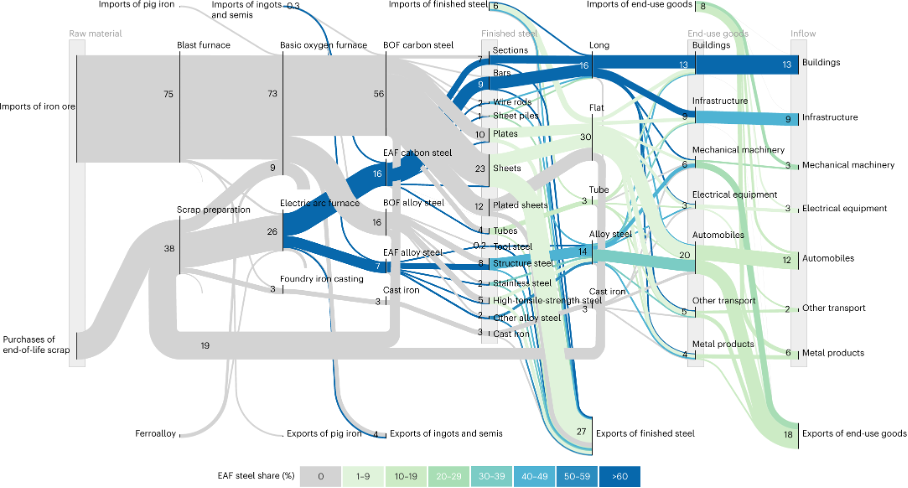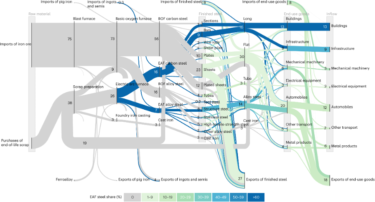
著者
Takuma Watari, Sho Hata, Kenichi Nakajima, and Keisuke Nansai
掲載誌
Nature Sustainability, 2023, Link
要旨
Achieving a zero-emission future depends greatly on how steel production is decarbonized within a limited time frame. Here we show that the production of zero-emission steel is possible but that the quantity and quality of steel may be limited by scrap downcycling. Using Japan as a case study, our analysis shows that most steel scrap is currently downcycled into construction materials, thereby limiting scrap-based steel to only 20% of the total steel used for automobiles, compared to 60% for buildings. Under a strict carbon budget, such downcycling practices could limit the production of steel used for automobiles to ~40% of current levels by 2050, even if production technology progresses according to the roadmap. The results indicate that steel users should not take the current level of steel supply for granted in a zero-emission future. Decarbonizing the steel sector, therefore, will depend not only on stand-alone efforts by the steel industry but on joint action with steel users to enable scrap upcycling and service provision with less steel use.

